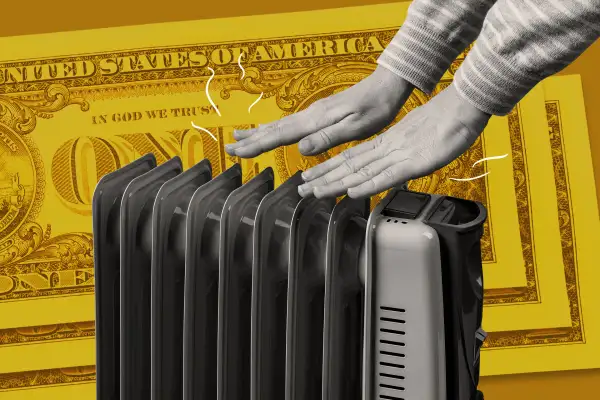America's Heating Bills Are Expected to Spike Again This Winter

American households could be in for a significant heating bill increase this winter — perhaps a price hike up to 34%, according to a new forecast.
The estimated increases would mark a second year in a row of substantially more expensive heating bills for renters and homeowners around the country. The largest price jumps are forecasted for natural gas customers, but your bills are likely to go up no matter what type of system you have.
Experts aren’t expecting higher costs because a particularly cold winter is in the forecast. Instead, it’s higher energy costs that will make it more expensive to keep your home warm.
The average cost of heating a home is forecasted to be $1,202 for the upcoming season, according to projections released this week by the National Energy Assistance Directors Association (NEADA). That estimate compares to an average cost of $1,025 last year and $888 the year before that.
Those projections would increase the cost of home heating an average of 17% higher than it was last winter and 35% higher than it was two years ago. The figures are significantly higher than general inflation, which was measured at 8.3% in August on a year-over-year basis.
How much will my heating bills rise?
Heating costs are likely to increase across the board, but the price increase will be especially noticeable for customers using natural gas, which is the most common type of heating in the U.S.
By fuel type, here’s how much heating costs are forecasted to rise this winter:
- Natural gas, 34.3%
- Electricity, 6.9%
- Heating Oil, 12.8%
- Propane, 15.2%
Natural gas heating is likely to remain as the cheapest type of system this winter, even after the anticipated price hikes. For natural gas customers, the average winter heating cost is forecasted to be $952 (compared to $709 last winter), while the average electric heating cost is expected to come in at $1,328 for the season (versus $1,242 the previous winter).
When it comes time to flip the heat on this winter, many Americans will find they are being charged higher rates than at any point in the last decade, according to NEADA.
“Home heating costs are becoming increasingly unaffordable for millions of lower income families,” NEADA officials said. “The rise in home energy costs this winter will put millions of lower income families at risk of falling behind on their energy bills and having no choice but to make difficult decisions between paying for food, medicine and rent.”
How can I save money on heating?
To avoid a brutal heat bill, there are tried and true measure for reducing energy costs during the cold season.
One of the simplest solutions is turning the thermostat down when you’re away from home and reducing the temperature when you’re asleep under warm blankets.
You should always make sure heating devices like radiators and furnaces are properly maintained. Before the winter weather approaches, it may be a good time to clean your heating unit or to swap out dirty filters.
Sealing up air leaks in your home — a perfect project to take on in the early fall, before the weather turns cold — can also improve efficiency, alongside using curtains strategically in the winter.
If you want to get serious about keeping your bills down this winter, you can read more about strategies to save money on heating costs here.
More from Money:
Inflation Update: Food, Rent, Electricity See Biggest Price Increases in Decades
40% of Americans Are Struggling to Pay Their Bills Right Now

